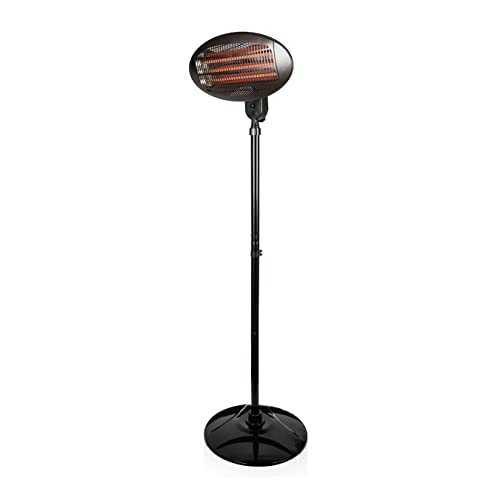5 Laws To Help To Improve The Patio Heat Lamp Electric Industry

How to Choose a Patio Heat Lamp Electric
There are a variety of options when it comes to heating your patio. Electric heaters are much more convenient than propane models which require refueling. They can be heated immediately by pressing a button, or flicking the switch.
They don't emit gasses that could cause an health risk. Certain units come with adjustable heat settings to accommodate varying distances.
Type of Heater
You can relax outside all through the evening and throughout the year by using the right patio heater. Patio heaters are available in a variety of different types that include freestanding propane or natural gas models and wall- or ceiling mounted electric radiant heaters. Your choice will be based on the size of your space, the power sources available, and your personal preferences.
Most patio heaters use electricity, liquid or natural gas to generate heat. They emit heat via convection heating in combination with radiant heating. The output of patio heaters is measured in watts, which can be converted into British thermal units (BTUs), for comparison. Some models also have adjustable heat settings for greater flexibility.

A patio heat lamp incorporates an electric burner on a pole with a perforated metal screen that is reflective of the flames and radiates the heat downwards to warm furniture, people and other objects. Some patio heat lamps come with a reflective reflector over the burner that can be silvered to reduce the amount that heat is lost upwards.
Gas patio heaters are among the most common patio heaters. They can heat several tables quickly and evenly. They are portable and can run on propane tanks, or they can be plumbed in to your natural gas line. This is more convenient and comes with lower upfront costs, however it requires fuel.
infrared patio heater electric increasing number of homes are outfitted with natural gas lines, making them the ideal solution for those who prefer to use gas-powered patio heaters. These heaters are easy to install, but they require a gas line that is properly installed and functioning to be safe. Portable natural gas heaters are available with extension hoses to overcome this limitation, but they could be a trip hazard and may pose an additional fire hazard when not in use.
Safety
Most electric patio heaters are safe to use in covered areas due to their ability for heat to radiate outward, instead of upwards towards combustible materials like the roof. However, they're not meant for use under an open roof. infrared patio heater electric should be placed at minimum 18" from the walls adjacent to it or 6" from the ceiling to avoid fire hazards.
Patio heaters made of propane and gas are typically safe to be installed in enclosed areas and are protected by the proper cover made for outdoor use. These covers are usually made of fire-resistant fabric and come with a roof which can be closed. The safety concerns associated with these types of outdoor patio heaters are due to the fumes and flames they produce. They should be located away from any objects that could ignite, such as curtains and chairs.
Follow the instructions and safety guidelines of the manufacturer when installing a patio heater or heat lamp. Choose a system that has UL and CSA safety certifications. Be sure to go through the owner's instructions thoroughly. Be especially careful around children and pets and make sure the heater isn't near them when it's in operation. Some patio heaters that stand on their own such as EUROM's come with an automatic tipping safety that shuts down the device in the event of a fall.
If your patio heater runs on a natural gas line it is essential to inspect the condition of the line on a regular basis and to have it tested for leaks by a certified professional. If the line has to be replaced, make sure to employ an authorized plumber. A professional will be able to determine if the line needs to be routed through an underground pipe or not. A professional will also be able to ensure that the patio heater is connected to an outlet that is GFCI-rated (ground fault circuit interrupter) to protect against electric shocks and fires.
Installation
The size of the patio heater is mounted affects how much heat it will radiate into the area. The heater should be placed away from surfaces such as plastic and wood that could deform. Depending on the model of the heater you may choose to place it on a wall or structure using standard mounting brackets. Some models feature a soft starter that reduces the current at the highest level to ensure your circuits are protected.
